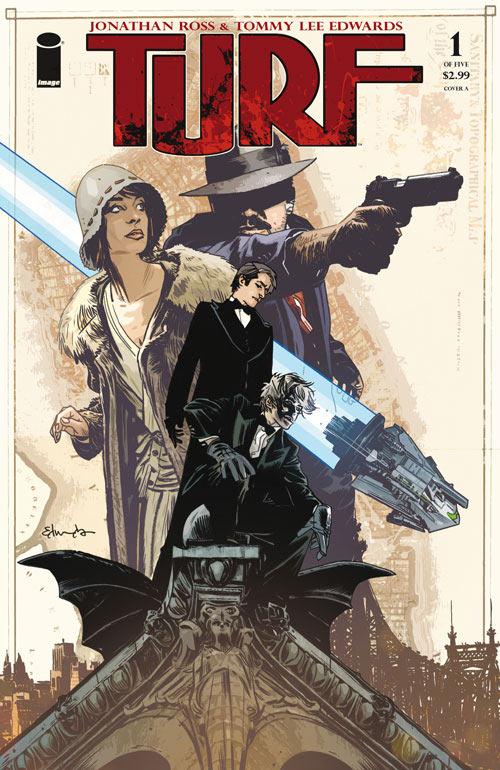Vampires, Aliens and prohibition what more could one story offer? How about Mobsters! As ridiculous as this premise is, it attempts to work. That’s not to say that it’s great but it’s functional. The story starts in 1929; prohibition is in effect which means that mobsters are getting rich supplying booze to the country. New York is divided between four families and recently one of those families has disappeared from the face of the planet. The Dragonmir brothers run a vampire clan, but have not yet revealed themselves to the world. To the mobsters they deal with, they are just weird rich people that buy blood rather than booze. What the mobster’s don’t know is that one of the Dragonmir brothers is attempting a coup to not only take over the mobster’s territories but also the vampire clan. 
Jonathan Ross seems incapable of letting the story speak for itself. Every character spews so much information that the book is beyond chatty… It’s an encyclopedia of the world. Characters reiterate information back and forth beyond redundancy. Beside everyone talking way too much and never saying anything interesting, they speak with a modern voice. There’s no 20’s lingo, or any real hints that this book even takes place during the decade other than prohibition. If not for Tommy Lee Edwards (Marvel 1985) drawing the era spot on, this book really could take place at any point of time.
Thankfully the mobster are not Goodfella’s knock offs. On the other hand the vampires are very much Bela Lugosi, which doesn’t work in the print medium. The amount of dialog in the book really shows the writers lack of experience. The story in itself is fairly unique to the world of comics, but so much of it is lost in dialog bubbles. Rather than a simple narration the characters are forced to give us details that they would not otherwise know or discuss.
The worst character of the book is a female reporter that of course doesn’t want to cover the high society events and fluff pieces anymore. No, instead she wants to be investigative reporter that cracks all the major stories actually affecting the city. In a book filled with stereotypes she’s the worst. She could have been April O’Neil or Lois Lane, throw a stone and you’ll hit the same character in another book. The difference being that the before mentioned characters fit it historical with their era and stories.
Tommy Lee Edward’s art, although hidden under word bubbles, is gritty and real. I wouldn’t say he captures New York because the story keeps you at street level, but he definitely captures the era. The art is the best part of the book and even though the writer wouldn’t let it tell the story, it still does. Some people will probably give up on the dialog half way through and still get the beef o f the story from the art alone.
A huge problem with this book seems to be a breakdown between writer and artist. Nether seem to be on the same page or share the same vision. The story is unique, but it’s overcrowded. The amount of characters introduced in the first issue is ridiculous and doesn’t even include the aliens. For a mini-series this book seriously fails to catch the reader’s attention, rather it puts them asleep and forgets to tuck them in.
Story – 3.0
Art – 7.5
Overall – 5.3
Dustin would like to remind you that Puttin’ On The Ritz came out in 1929… it’s a song look it up! Follow Dustin as he puts on the Twitter and the FormSpring.